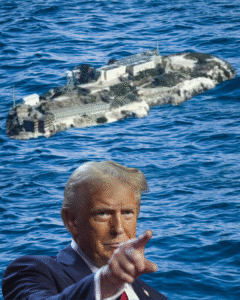In a surprise and controversial announcement, President Donald Trump has ordered the reopening of the iconic Alcatraz prison, located in the San Francisco Bay Area, as part of his strategy to tighten security and crime-fighting policies. Closed since 1963, the prison will once again operate with new infrastructure and maximum security, intended to house the country’s most violent and dangerous criminals.
Trump made his decision public through an official statement and on his social network, assuring that “it is time to regain control, impose order and send a clear message to criminals”. The president indicated that Alcatraz will become the symbol of a new era of “firm and uncompromising” justice.
The plan contemplates not only the rehabilitation of the historic structure, but also an expansion of the prison complex with state-of-the-art surveillance technology. The prison is expected to house both criminals convicted of violent crimes and immigrants with criminal records, in line with the government’s recent immigration and homeland security measures.
The news has generated intense debate in the country. While Trump’s supporters see the decision as a brave step to stem the crime wave, critics of the president question the viability of the project, the high costs it would entail and the effectiveness of resorting to a symbol of the past as a solution to current problems.
Alcatraz, famous for having housed criminals like Al Capone and known for its seeming impossibility of escape, has been maintained for decades as a tourist attraction. Now, the government plans to return it to its former purpose, adapting it to the demands of the 21st century.
With this decision, Trump reinforces his message of law and order ahead of the upcoming elections and seeks to reaffirm his image as a ruthless leader in the face of crime, although not without controversy.


